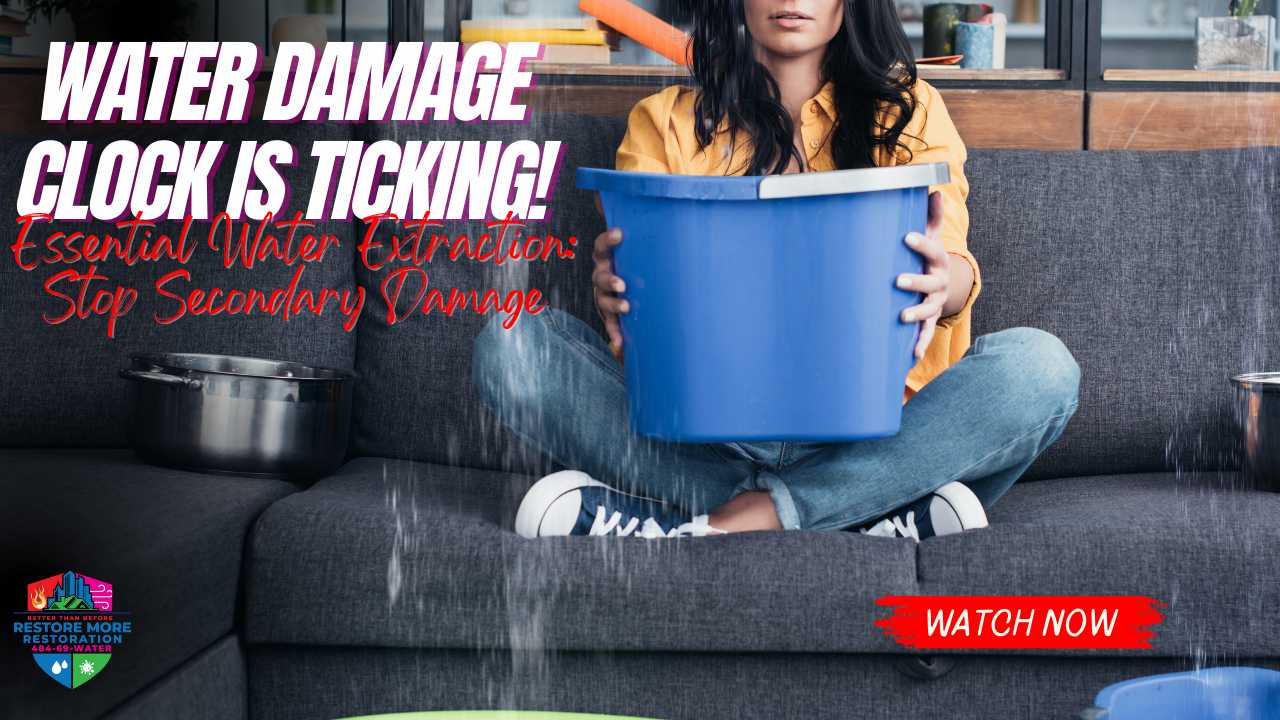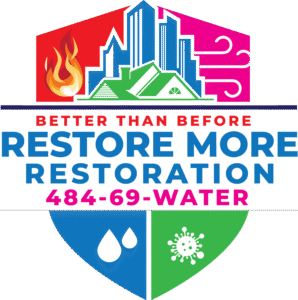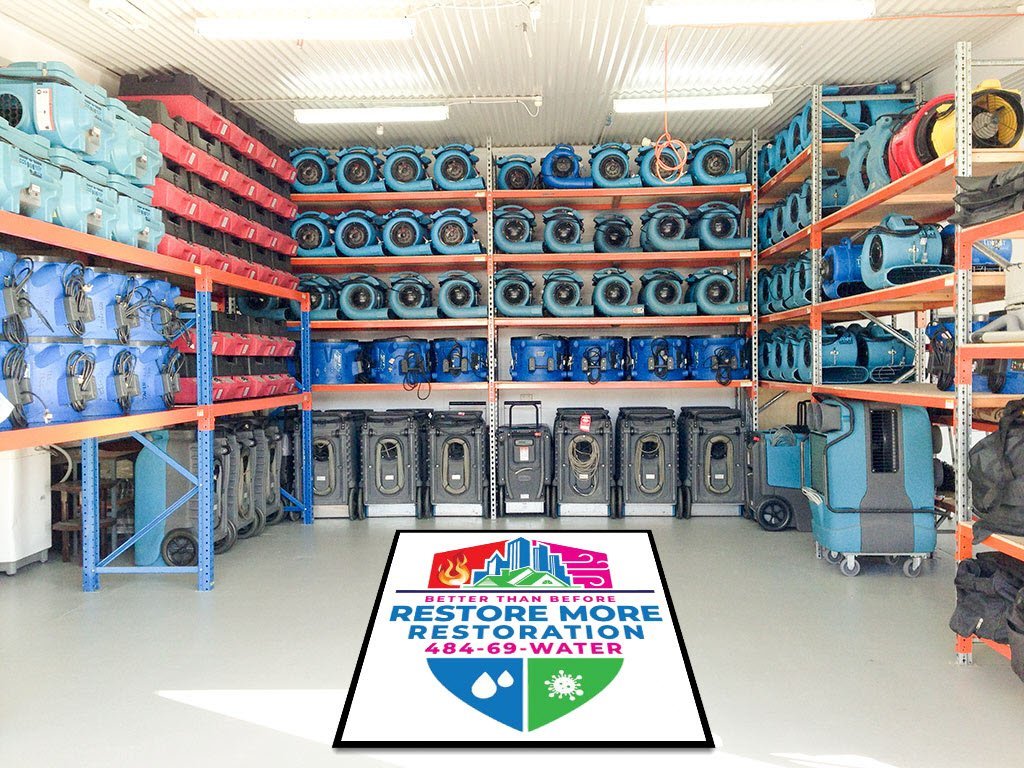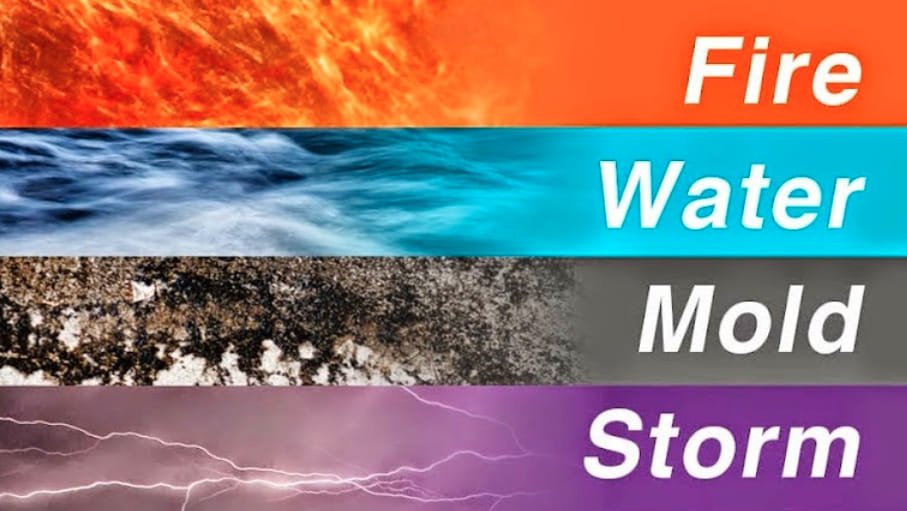Winter Water Damage Prevention: Protecting Your Garnet Valley Home from Cold Weather Damage
Winter in Garnet Valley brings beautiful snow-covered landscapes and cozy evenings by the fireplace, but it also presents significant water damage risks that can turn the season into a homeowner’s nightmare. From frozen pipes and ice dams to heating system failures and storm damage, Pennsylvania’s winter weather creates unique challenges that require proactive preparation and vigilant maintenance. Understanding these risks and implementing comprehensive prevention strategies can save Garnet Valley homeowners thousands of dollars in damage while ensuring family comfort and safety throughout the coldest months.
As water damage restoration experts serving Garnet Valley and Delaware County, we’ve responded to countless winter emergencies that could have been prevented with proper preparation. Our partnership with RestoreMore365 has given us extensive experience in winter damage restoration and prevention, and we’re committed to helping our neighbors protect their homes before problems occur. Winter preparation isn’t just about comfort—it’s about preventing catastrophic damage that can disrupt your life for months.
Understanding Winter Water Damage Risks in Garnet Valley
Garnet Valley’s location in southeastern Pennsylvania creates specific winter water damage risks that homeowners must understand and prepare for. According to the National Weather Service, understanding regional weather patterns and their impact on residential properties is crucial for effective damage prevention.
Delaware County Winter Weather Patterns
Temperature Fluctuations: Garnet Valley experiences significant temperature swings during winter months, with daytime temperatures often rising above freezing while nighttime temperatures drop well below. These freeze-thaw cycles create ideal conditions for pipe freezing, ice dam formation, and foundation damage from expanding and contracting water.
Precipitation Patterns: Winter precipitation in Delaware County includes snow, sleet, freezing rain, and rain, often occurring in combination during single weather events. This variety of precipitation types creates complex water damage scenarios that require different prevention strategies.
Wind and Storm Exposure: Winter storms in the region can produce damaging winds that affect roofing systems, siding, and trees. Combined with precipitation, these storms can create multiple water intrusion points and emergency situations.
Humidity and Indoor Air Quality: Winter heating systems and sealed homes create humidity challenges that can lead to condensation problems, mold growth, and indoor air quality issues if not properly managed.
Common Winter Water Damage Scenarios
Frozen Pipe Failures: Frozen pipes are the most common winter water damage cause in Garnet Valley, particularly affecting homes with inadequate insulation, unheated areas, or pipes located in exterior walls. When pipes freeze and burst, they can release hundreds of gallons of water into homes within minutes.
Ice Dam Formation: Ice dams form when snow melts on warm roof sections and refreezes at cold roof edges, creating barriers that force water under shingles and into homes. Garnet Valley’s varied roof designs and heating patterns make many homes susceptible to ice dam damage.
Heating System Failures: Heating system malfunctions during winter can lead to frozen pipes, condensation problems, and emergency situations that require immediate professional intervention. Boiler leaks, furnace condensate issues, and heat pump failures create both comfort and water damage risks.
Storm-Related Damage: Winter storms can damage roofing systems, break tree branches that impact homes, and create multiple water intrusion points. Heavy snow loads can stress roofing systems and cause structural damage that allows water penetration.
Foundation and Basement Issues: Freeze-thaw cycles affect foundation materials and can create new cracks or worsen existing ones. Snow accumulation around foundations can create moisture problems when melting occurs, particularly in basements and crawl spaces.
Comprehensive Pipe Freeze Prevention
Understanding Pipe Vulnerability
High-Risk Pipe Locations: Pipes most vulnerable to freezing include those in unheated areas such as basements, crawl spaces, attics, and garages. Pipes in exterior walls, particularly on north-facing sides of homes, are also at high risk. Supply lines are more vulnerable than drain lines due to their smaller diameter and constant water pressure.
Temperature Thresholds: Pipes begin to freeze when temperatures drop below 32°F, but the risk increases significantly when temperatures remain below 20°F for extended periods. Wind chill and air infiltration can create freezing conditions even when outdoor temperatures are slightly above freezing.
Construction Factors: Homes built before modern insulation standards, properties with additions or renovations, and homes with complex plumbing layouts face higher freeze risks. Understanding your home’s specific vulnerabilities helps prioritize prevention efforts.
Insulation and Protection Strategies
Pipe Insulation Installation: Install foam pipe insulation on all exposed pipes in unheated areas, paying particular attention to pipes in basements, crawl spaces, and attics. Use insulation sleeves or wrap insulation around pipes, ensuring complete coverage without gaps. For pipes in extremely cold areas, consider heat tape or cable in addition to insulation.
Air Sealing and Draft Prevention: Seal air leaks around pipes where they pass through walls, floors, and ceilings. Use caulk, expanding foam, or other appropriate sealants to prevent cold air from reaching pipes. Pay particular attention to areas where pipes enter the home from outside or pass through unheated spaces.
Cabinet and Interior Protection: Open cabinet doors under sinks during extremely cold weather to allow warm air circulation around pipes. Remove items stored against exterior walls that might block heat circulation. Consider installing small fans to improve air circulation in problem areas.
Outdoor Faucet Protection: Disconnect and drain garden hoses before the first freeze. Shut off water supply to outdoor faucets and drain remaining water from lines. Install insulated faucet covers or wrap outdoor faucets with insulation and plastic bags for additional protection.
Heating and Temperature Management
Consistent Temperature Maintenance: Maintain consistent indoor temperatures throughout the home, including basements and other areas with plumbing. Avoid setting thermostats below 55°F even when away from home for extended periods. Consider using space heaters in particularly vulnerable areas, following all safety guidelines.
Circulation and Air Movement: Ensure adequate air circulation throughout the home by running ceiling fans on low speed to move warm air. Keep interior doors open to promote air circulation between rooms. Consider installing additional ventilation in problem areas.
Monitoring and Alert Systems: Install temperature monitoring systems in vulnerable areas such as basements and crawl spaces. Consider smart home systems that provide alerts when temperatures drop to dangerous levels. Use wireless thermometers to monitor multiple locations throughout the home.
Emergency Heating Backup: Maintain backup heating sources such as space heaters, generators, or alternative heating systems in case of primary system failure. Ensure backup systems are properly maintained and safely operated according to manufacturer guidelines.
Water Flow and Pressure Management
Faucet Dripping Strategy: Allow faucets to drip slightly during extreme cold periods to maintain water movement through pipes. Focus on faucets served by pipes in vulnerable locations such as exterior walls or unheated areas. The cost of water waste is minimal compared to pipe repair costs.
Water System Pressure: Maintain appropriate water pressure throughout the system, as low pressure can increase freeze risk. Check for pressure drops that might indicate developing problems. Consider installing pressure monitoring systems for early problem detection.
Shut-Off Valve Knowledge: Know the location of your main water shut-off valve and ensure it’s easily accessible and functional. Know the locations of individual fixture shut-offs for quick response to localized problems. Ensure all family members understand shut-off procedures.
Vacation and Extended Absence Preparation: When leaving home for extended periods during winter, maintain heating at appropriate levels and consider having someone check the property regularly. Shut off water supply and drain pipes if the home will be unheated. Consider professional winterization services for extended absences.
Ice Dam Prevention and Management
Understanding Ice Dam Formation
Formation Process: Ice dams form when heat from the home melts snow on the roof, causing water to flow down and refreeze at the colder roof edges. This creates a dam that prevents proper drainage and forces water under shingles and into the home. Understanding this process helps identify prevention strategies.
Contributing Factors: Poor attic insulation, inadequate ventilation, and heat loss from the home contribute to ice dam formation. Complex roof designs with valleys, dormers, and varying slopes create additional challenges. Understanding your roof’s specific characteristics helps develop targeted prevention strategies.
Damage Potential: Ice dams can cause significant damage to roofing systems, gutters, siding, and interior spaces. Water intrusion from ice dams can damage ceilings, walls, insulation, and personal property. Prevention is far more cost-effective than repair and restoration.
Attic Insulation and Air Sealing
Insulation Assessment: Evaluate attic insulation levels and ensure adequate coverage to prevent heat loss. Delaware County homes should have R-38 to R-60 insulation in attics depending on heating system type. Add insulation if levels are inadequate, ensuring proper installation without blocking ventilation.
Air Sealing Priority Areas: Seal air leaks between living spaces and attics, focusing on areas around chimneys, plumbing penetrations, electrical fixtures, and attic access points. Use appropriate sealants and materials for different types of penetrations. Professional energy audits can identify hidden air leaks.
Bypass Elimination: Eliminate thermal bypasses that allow warm air to reach the attic, such as unsealed electrical boxes, plumbing chases, and ductwork penetrations. These hidden air leaks can significantly contribute to ice dam formation even when insulation levels appear adequate.
Professional Assessment: Consider professional energy audits to identify insulation and air sealing needs. Thermal imaging can reveal heat loss patterns that contribute to ice dam formation. Professional assessment ensures comprehensive solutions rather than piecemeal fixes.
Ventilation System Optimization
Intake and Exhaust Balance: Ensure balanced attic ventilation with adequate intake vents at soffits and exhaust vents at or near the ridge. Proper ventilation maintains consistent attic temperatures and prevents the warm-cold temperature differential that causes ice dams.
Ventilation Calculation: Calculate ventilation needs based on attic square footage, with general recommendations of 1 square foot of ventilation per 150 square feet of attic space, split equally between intake and exhaust. Adjust calculations based on specific roof and climate conditions.
Obstruction Removal: Remove obstructions from ventilation systems including debris, insulation blocking vents, and damaged vent components. Ensure soffit vents are clear of insulation and that ridge vents are functioning properly. Regular maintenance keeps ventilation systems effective.
Mechanical Ventilation Considerations: Consider mechanical ventilation systems such as powered exhaust fans for attics with challenging natural ventilation. Ensure mechanical systems are properly sized and controlled to avoid creating pressure imbalances that could worsen problems.
Roof and Gutter Maintenance
Pre-Winter Roof Inspection: Conduct thorough roof inspections before winter weather arrives, checking for damaged shingles, flashing problems, and other issues that could worsen with ice dam formation. Address any problems before winter to prevent combined damage scenarios.
Gutter System Preparation: Clean gutters and downspouts thoroughly before winter and ensure proper drainage away from the foundation. Consider installing gutter guards to reduce debris accumulation. Ensure gutters are properly sloped and securely attached to handle ice loads.
Snow Removal Planning: Develop plans for safe snow removal from roofs when accumulation becomes excessive. Consider professional snow removal services rather than attempting dangerous roof access. Focus on removing snow before ice dam formation rather than trying to remove established ice dams.
Heat Cable Installation: Consider installing heat cables along roof edges and in gutters for homes with chronic ice dam problems. Ensure proper installation and electrical safety. Heat cables should be used as part of comprehensive prevention rather than as the sole solution.
Heating System Winter Preparation
Furnace and Boiler Maintenance
Pre-Season Professional Service: Schedule professional heating system maintenance before winter begins, including cleaning, inspection, and tune-up services. Professional maintenance identifies potential problems before they cause failures during peak demand periods.
Filter Replacement and Maintenance: Replace heating system filters before winter and maintain regular replacement schedules throughout the heating season. Clean filters improve efficiency and prevent system strain that could lead to failures. Consider upgrading to higher-quality filters for better performance.
Combustion and Safety Inspection: Ensure proper combustion and safety system operation through professional inspection. Check carbon monoxide detectors and ensure proper ventilation for combustion appliances. Address any safety concerns immediately before winter operation.
System Component Inspection: Inspect all system components including ductwork, vents, thermostats, and controls. Ensure proper operation of all safety systems and automatic controls. Test emergency shut-offs and backup systems before they’re needed.
Ductwork and Distribution Systems
Ductwork Inspection and Sealing: Inspect ductwork for leaks, damage, and proper insulation, particularly in unheated areas such as crawl spaces and attics. Seal ductwork leaks to improve efficiency and prevent condensation problems. Ensure proper support and protection from freezing.
Ventilation System Maintenance: Maintain proper operation of ventilation systems including exhaust fans, fresh air intakes, and humidity control systems. Clean ventilation components and ensure proper operation throughout winter months.
Zone Control and Balance: Ensure proper heating distribution throughout the home by checking zone controls and system balance. Address areas that don’t receive adequate heating, as these areas are more susceptible to freezing problems.
Thermostat Calibration: Calibrate thermostats and ensure proper operation of programmable and smart thermostat systems. Consider upgrading to more accurate and reliable thermostat systems for better temperature control and energy efficiency.
Water Heating System Care
Water Heater Inspection: Inspect water heaters for signs of leaks, corrosion, or other problems that could worsen during winter operation. Check temperature and pressure relief valves and ensure proper operation. Address any issues before winter demand increases.
Insulation and Efficiency: Insulate water heater tanks and hot water pipes to improve efficiency and prevent heat loss. Consider water heater blankets for older units and pipe insulation for hot water distribution lines.
Backup and Emergency Planning: Develop backup plans for water heating in case of primary system failure. Consider backup water heating options and ensure emergency repair services are available. Maintain emergency contact information for heating system repairs.
Condensate System Maintenance: For high-efficiency heating systems, ensure proper condensate drainage and prevent freezing of condensate lines. Insulate condensate lines in unheated areas and ensure proper drainage away from the home.
Emergency Preparedness and Response
Emergency Supply Preparation
Essential Emergency Supplies: Maintain emergency supplies including flashlights, batteries, portable radios, and emergency contact information. Keep emergency supplies easily accessible and ensure all family members know their locations. Include supplies specific to water damage emergencies such as tarps and basic tools.
Water and Food Storage: Store emergency water supplies in case of service interruptions, with at least one gallon per person per day for several days. Maintain non-perishable food supplies and manual can openers. Consider the needs of pets and family members with special requirements.
Heating and Power Backup: Maintain backup heating sources such as space heaters, generators, or alternative heating systems. Ensure backup systems are properly maintained and safely operated. Store adequate fuel supplies for backup systems while following safety guidelines.
Communication and Information: Maintain battery-powered or hand-crank radios for emergency information. Keep cell phones charged and consider backup power sources for communication devices. Maintain emergency contact lists including utility companies and restoration services.
Emergency Response Procedures
Water Shut-Off Procedures: Ensure all family members know how to shut off water supplies at the main valve and individual fixtures. Practice shut-off procedures and ensure valves are accessible and functional. Consider installing emergency shut-off tools in easily accessible locations.
Electrical Safety Protocols: Know how to shut off electrical power to affected areas in case of water intrusion. Understand electrical safety around water and when to evacuate rather than attempt repairs. Maintain contact information for emergency electrical services.
Damage Documentation: Understand proper procedures for documenting water damage for insurance purposes. Keep cameras or phones available for damage documentation. Know how to safely document damage without creating additional safety risks.
Professional Emergency Services: Maintain contact information for emergency restoration services, including RestoreMore365, which provides 24/7 emergency response for water damage situations in Garnet Valley. Know when to call professionals rather than attempting repairs yourself.
Insurance and Financial Preparation
Policy Review and Understanding: Review homeowner’s insurance policies to understand coverage for winter-related water damage. Understand policy exclusions and ensure adequate coverage for potential winter damage scenarios. Consider additional coverage if needed.
Documentation and Inventory: Maintain current documentation of home contents and improvements for insurance purposes. Store important documents in waterproof containers or off-site locations. Keep receipts for home improvements and maintenance that might affect coverage.
Emergency Fund Planning: Maintain emergency funds for immediate damage mitigation and temporary living expenses if needed. Understand insurance claim processes and potential delays in claim settlements. Plan for immediate expenses that might not be covered by insurance.
Professional Service Contacts: Maintain current contact information for emergency services including restoration companies, plumbers, electricians, and heating contractors. Research service providers before emergencies occur to ensure quality and reliability.
Specific Garnet Valley Winter Considerations
Local Climate and Geographic Factors
Brandywine Creek Watershed: Properties near Brandywine Creek and its tributaries face additional winter flooding risks from ice jams and rapid snowmelt. Understand your property’s flood risk and prepare accordingly with appropriate drainage and emergency planning.
Elevation and Exposure: Garnet Valley’s varied topography creates different microclimates and exposure risks. Properties at higher elevations may face more severe wind and temperature conditions, while lower areas may have different drainage and flooding concerns.
Soil and Drainage Characteristics: Delaware County’s clay-heavy soils can create drainage challenges during winter thaw periods. Understand your property’s drainage patterns and prepare for potential basement flooding during rapid snowmelt events.
Municipal Services and Support: Understand municipal snow removal priorities and emergency services availability during winter storms. Know how to contact local emergency services and understand response priorities during widespread emergency situations.
Housing-Specific Considerations
Historic Home Challenges: Garnet Valley’s historic homes may have unique winter challenges including older plumbing systems, inadequate insulation, and complex architectural features that create ice dam risks. Develop prevention strategies appropriate for historic construction.
Modern Development Considerations: Newer developments may have different challenges including complex HVAC systems, modern plumbing configurations, and different insulation standards. Understand your home’s specific systems and their winter maintenance requirements.
Neighborhood Infrastructure: Understand neighborhood infrastructure including water pressure variations, power grid reliability, and emergency access during winter storms. Coordinate with neighbors for mutual assistance during emergencies.
Community Resources: Take advantage of community resources including municipal emergency services, neighbor networks, and local contractor availability. Participate in community emergency preparedness efforts and neighborhood watch programs.
Professional Services and Maintenance
When to Call Professionals
Preventive Maintenance Services: Schedule professional services for heating system maintenance, roof inspection, and plumbing system evaluation before winter. Professional maintenance identifies problems before they become emergencies and ensures optimal system performance.
Emergency Response Services: Know when to call professional emergency services rather than attempting repairs yourself. Understand the limits of DIY repairs and the importance of professional assessment for complex problems.
Specialized Winter Services: Consider professional services for specialized winter needs such as roof snow removal, ice dam removal, and emergency heating system repairs. Professional services ensure safety and proper problem resolution.
Insurance Coordination: Use professional services that understand insurance requirements and can provide proper documentation for claims. Professional restoration companies can coordinate with insurance adjusters and ensure proper claim handling.
Choosing Quality Service Providers
Local Experience and Knowledge: Choose service providers with experience in Garnet Valley and understanding of local conditions, building codes, and permit requirements. Local knowledge ensures appropriate solutions for regional challenges.
Licensing and Certification: Ensure all service providers are properly licensed and certified for work in Pennsylvania and carry appropriate insurance coverage. Verify credentials and check references from other local customers.
Emergency Availability: Choose service providers that offer emergency response when needed for urgent winter situations. Understand response times and availability during peak demand periods such as severe winter storms.
Quality and Reliability: Check references and reviews from other customers to ensure quality service and reliability. Choose providers with established reputations for quality work and customer satisfaction.
Cost-Effective Winter Prevention
DIY Prevention Strategies
Basic Maintenance Tasks: Many winter prevention tasks such as pipe insulation, air sealing, and basic heating system maintenance can be performed by homeowners with appropriate knowledge and tools. Focus on tasks that provide high value and don’t require specialized expertise.
Monitoring and Inspection: Homeowners can perform regular monitoring and inspection tasks to identify problems early. Develop inspection routines and checklists to ensure consistent attention to potential problem areas.
Emergency Preparedness: Most emergency preparedness activities can be performed by homeowners including supply storage, emergency planning, and family education about emergency procedures.
Simple Repairs and Improvements: Basic repairs such as caulking, weatherstripping, and minor insulation improvements can often be performed by homeowners with proper guidance and materials.
Professional Investment Priorities
Critical System Maintenance: Prioritize professional maintenance for critical systems such as heating, plumbing, and roofing that require specialized knowledge and equipment. Professional maintenance prevents costly emergency repairs.
Safety-Critical Services: Use professionals for any work involving safety risks such as electrical systems, gas appliances, or roof work. Safety considerations outweigh cost savings for potentially dangerous tasks.
Complex Problem Diagnosis: Use professional services for complex problem diagnosis and solutions that require specialized knowledge or equipment. Professional assessment ensures appropriate solutions rather than temporary fixes.
Warranty and Insurance Protection: Use professional services to maintain warranties on major systems and ensure insurance coverage requirements are met. Professional work provides documentation and protection for insurance claims.
Conclusion
Winter water damage prevention in Garnet Valley requires comprehensive preparation, consistent maintenance, and understanding of local conditions and risks. By implementing the strategies outlined in this guide, homeowners can significantly reduce their risk of winter water damage while ensuring family comfort and safety throughout the coldest months.
Remember that prevention is always more cost-effective than restoration, but when winter emergencies do occur despite your best efforts, professional help is available to minimize damage and restore your home quickly. The key to successful winter preparation is starting early, maintaining consistent attention to potential problems, and knowing when to seek professional assistance.
For more information about winter water damage prevention and emergency restoration services, visit our comprehensive guides on emergency water damage response, basement water damage prevention, burst pipe cleanup, storm damage cleanup, and water damage restoration. These resources provide detailed information about both prevention strategies and professional restoration services available to Garnet Valley residents throughout the winter season.
Stay prepared, stay warm, and protect your most valuable investment through proper winter water damage prevention. Your proactive efforts today can save thousands of dollars and countless hours of disruption if winter weather challenges your home’s defenses.




